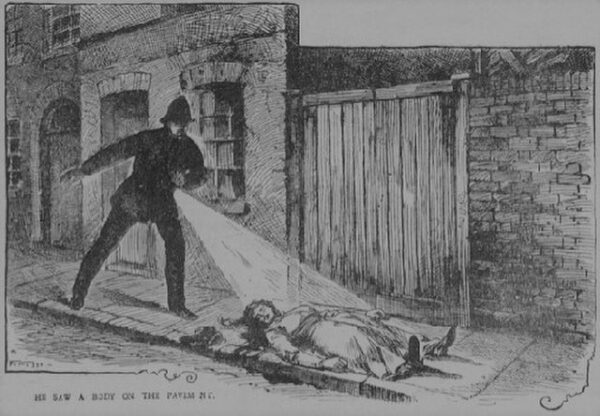On August 7, 1888, Martha Tabram, was found dead after a brutal murder. Her lifeless body bore the grim evidence of a brutal attack, displaying a horrifying thirty-nine stab wounds scattered across her body. The bulk of the wounds were inflicted using a commonplace pocket knife, while a particularly deep gash on her breast suggested the use of a more lethal weapon, such as a bayonet or dagger. The chilling details painted a stark picture of the perpetrator’s ruthless and violent nature and became a sensation in the press.
Jack The Ripper has attacked had killed his first victim.
One of history’s most infamous and enigmatic figures, the serial killer captured the imagination of the public and terrorized the streets of London for nearly three years. The gruesome and calculated murders of at least five women in the Whitechapel district between 1888 and 1891 have left a lasting impact on society, perpetuating numerous theories and sparking endless fixation in one of England’s most prominent unsolved mysteries of the Victorian Era.
Exploring the foggy alleys and dimly lit corners of Victorian London, one can almost hear the echoes of the chilling footsteps of Jack the Ripper. This dark chapter in history serves as a reminder of the stark contrast between the luxury of the upper classes and the abject poverty endured by the working-class inhabitants. The Ripper’s ability to evade capture and remain a faceless figure added an air of mystery and terror, cementing his place in the annals of crime.
“While Jack the Ripper was linked with many murders in the Whitechapel area, it is widely believed that there are five murders of a similar nature that can be credited without a doubt to the serial killer.
Mary Ann Nichols, Annie Chapman, Elizabeth Stride, Catherine Eddowes, and Mary Jane Kelly are all believed to have been Jack the Ripper’s victims. The five women were all brutally murdered. Incisions to the throat and abdomen were something of a trademark for Jack the Ripper, leaving no doubts as to why he quickly spread fear and panic throughout the area.
Police worked hard to identify the killer but to no avail. The case of Jack the Ripper was particularly notable as it was the first of its kind in the sense that it created a media frenzy. The press was quick to jump on the story of the killer, which played a huge role in spreading fear and panic over the murders,” writes British Heritage Travel.
Despite countless investigations and numerous suspects, the true identity of Jack the Ripper remained uncertain. That is until researchers used modern DNA technology to identify the killer.
USA Today explained that “a forensic investigation published in Journal of Forensic Sciences has identified the killer as Aaron Kosminski, a 23-year-old Polish barber and prime suspect at the time.
Kosminski was previously named as a suspect over 100 years ago and once again in a 2014 book by British businessman and Ripper researcher Russell Edwards. But the latest finding marks the first time that Edwards’ DNA evidence has been published in a peer-reviewed journal, according to the magazine Science.
Various theories have been put forward, ranging from disgruntled medical professionals to members of the royal family. The lack of conclusive evidence has allowed the legend of Jack the Ripper to persist throughout the years, captivating true crime enthusiasts and historians alike.
The study’s findings might not satisfy everyone interested in cracking the coldest case in history, however. Some Ripper experts think the shawl may have been contaminated over the years, noted the newspaper. “The shawl was given to Louhelainen by Edwards, a self-proclaimed “armchair detective” and author of “Naming Jack the Ripper,” who bought it at an auction in 2007, according to The Guardian.
“I’ve got the only piece of forensic evidence in the whole history of the case,” he told the newspaper in 2014. “I’ve spent 14 years working on it, and we have definitively solved the mystery of who Jack the Ripper was.”






